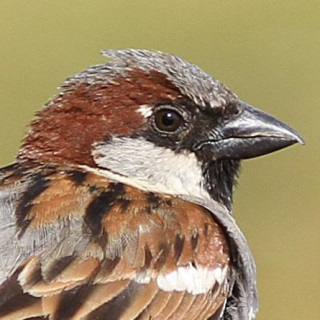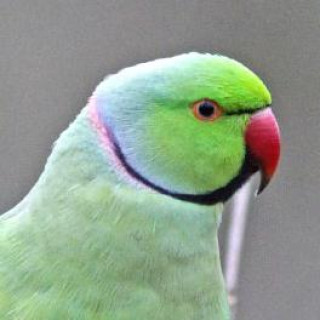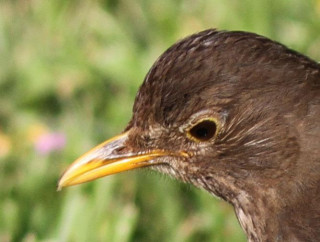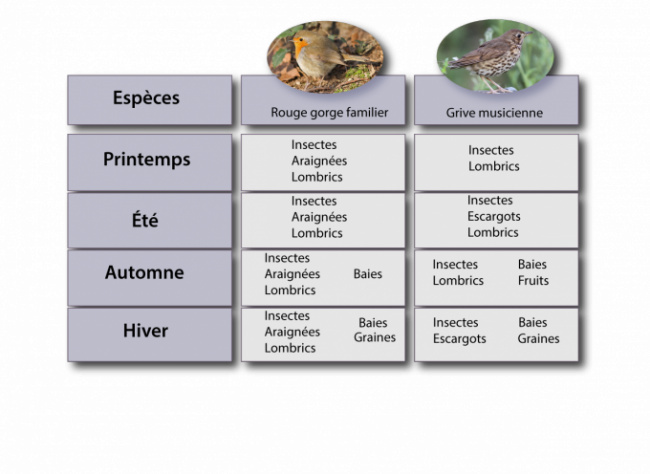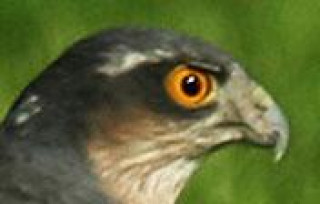The diet
Garden birds usually eat seeds or insects, or for the greediest, both! Although most birds have a favorite food, they often indulge in different foods. The shape of their beaks is a good indicator of their main diet.
Birds with short beaks
Birds with short, sturdy beaks are well equipped to shell or break seeds. Sparrows and finches are well known representatives of this category. However, in summer they also eat insects and caterpillars, especially to feed their chicks.
Granivores can be fed in the winter with feeders:
"Tray" feeders (or seeds placed directly on the ground) will attract Northern Sparrow, Sparrows, Cinereous Serin or even sparrows. Sunflower seeds are particularly popular with many species. Woodpeckers or the Nuthatch are fond of peanuts. Chickadees prefer fat balls. As for the Blackbird and the thrushes, the apples left on the ground will make them happy.
The Ring-necked Parakeet, a well-established exotic bird:
The ring-necked parakeet is a bird imported from Africa or Asia that is developing in many European cities following escapes from aviaries. In 2013, the population in the Ile-de-France region was estimated at around 3,000 individuals (the first ones came from a container at Orly airport in 1974, then from another at Roissy in 1990). It is a granivorous bird with a sharp, curved beak that enables it to remove the scales from buds.
Feeding the birds
Some links to help you feed the birds:
Birds with long bills
This beak shape is typical of insectivorous birds, which feed on insects, slugs or spiders. Among them we find blackbirds, chickadees and thrushes but also swallows and swifts that catch their food in mid-air.
In winter, a number of species of insectivorous birds do not migrate and eat berries and small dry seeds because insects are very scarce during this period.
Carnivorous birds
Raptors, also called birds of prey, have a hooked and sharp beak. It is used in particular by the European Sparrowhawk to pluck the birds it feeds on.
Providing for the winter
Some species are stocking up for the bad season. Black tits, nuthatches, and chickadees have a habit of hiding provisions by wedging seeds in the crevices of bark. Chickadees also hoard insects. Crows and magpies bury bread, meat, and various scraps. Birds seem to remember their location by visual cues. Jays even find acorns that they have hidden under the snow. Some of the forgotten seeds allow oak trees to grow.
Changes in behaviour
In recent years, there have been significant changes in the behaviour and diet of some birds, which have shown surprising adaptability. Here are some examples.
In the 1950s in Great Britain, blue tits and magpies learned to perch on milk bottles left outside doors in the morning and then pierce the caps to feed on the cream that had been left in the bottle. A crow has even been observed trying to do the same with a milk carton. It seems that this habit appeared simultaneously in several regions, and it spread rapidly.
Forest birds that were previously absent from gardens can now be found there. The robin and the blackbird are no longer strictly woodland birds. For some decades now, the alder tarin has been visiting gardens more and more frequently. This change in behaviour is probably due to the presence of peanut dispensers, as peanuts resemble their favourite food, the alder cone. But the tarins have also been helped by the expansion of conifer plantations, where they like to nest.
These changes in diet are probably due to the reduction in the amount of natural food that the birds usually eat.
